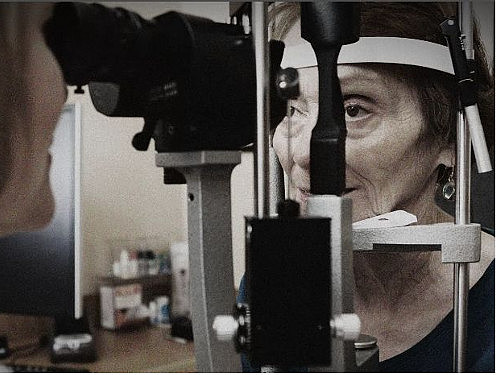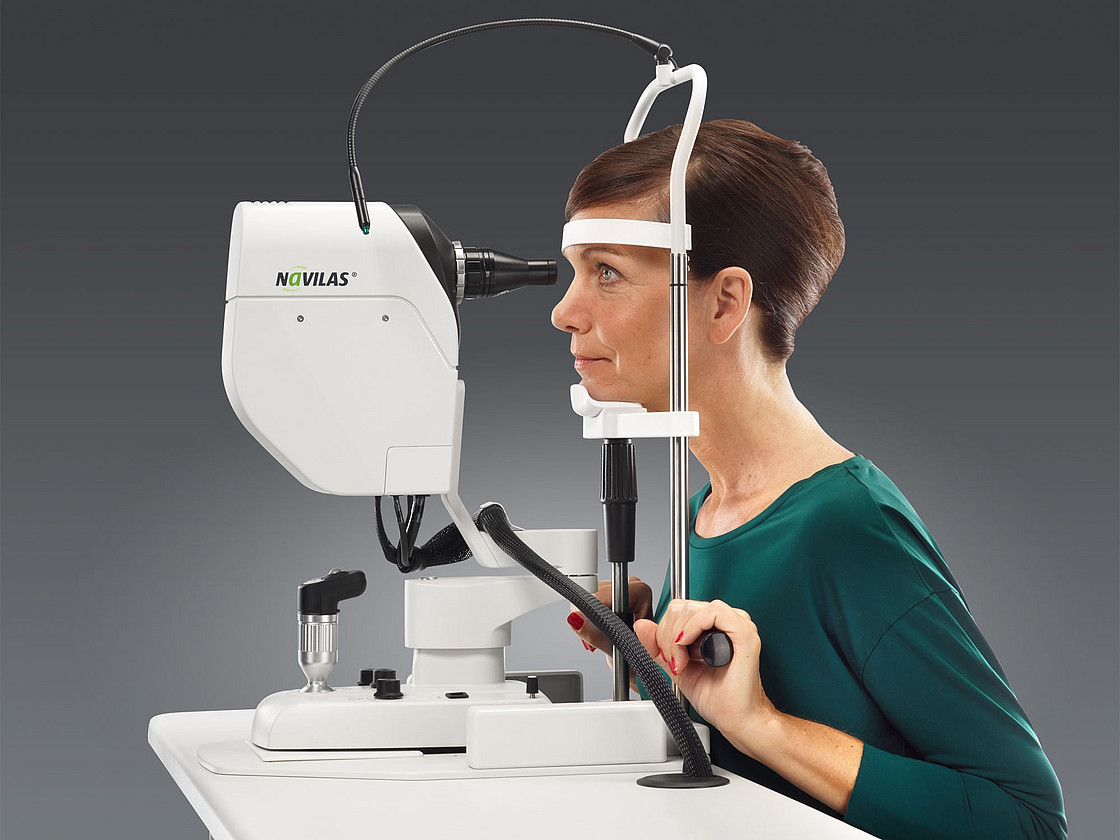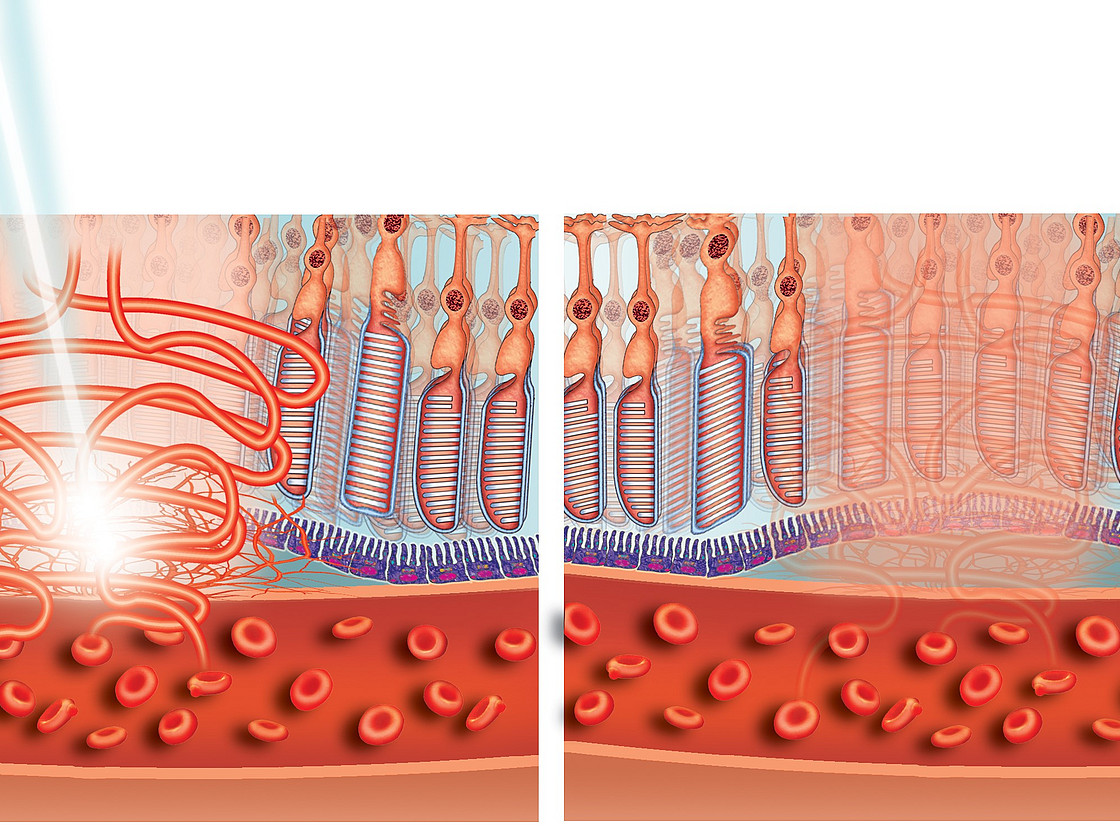What are the risks of laser treatment?
In conventional laser treatment, the effect is always achieved through the destruction of a small area and therefore always leads to the impairment of small areas of the retina. In general, this is not consciously perceived by the patient, as the damaged parts of the retina usually only have a small diameter of approx. 0.1 mm. In certain cases, vision may deteriorate, however.
Many patients find it uncomfortable to put on a special contact lens for laser treatment. Sometimes, this treatment contact lens can cause pain after the treatment. However, this generally subsides relatively quickly. Nevertheless, the treatment duration and the glare of the laser can lead to unpleasant sensations for the patient. Very rarely, bleeding and an increase in intraocular pressure may occur.
- Clinical Evaluation and Treatment Accuracy in Diabetic Macular Edema Using Navigated Laser Photocoagulator NAVILAS. Kozak I, Oster SF, Cortes MA, Dowell D, Hartmann K, Kim JS, Freeman WR. Ophthalmology. 2011 Jan 24
Read more - Pain and accuracy of focal laser treatment for diabetic macular edema using a retinal navigated laser (Navilas). Kernt M, CheuteuRE, Cserhati S, Seidensticker F, Liegl RG, Lang J, Haritoglou C, Kampik A, Ulbig MW, Neubauer AS. Clin Ophthalmol. 2012;06:289-96
Read more - Navigated macular laser decreases retreatment rate for diabetic macular edema: a comparision with conventional macular laser. Neubauer AS, Langer J, Wolf J, Kozak I, Seidensticker F, Ulbig M, Freeman WR, Kampik A, Kernt M. Clin Ophthalmol. 2013:121-128
Read More - From Art to Science in DME Treatment A comparison of anatomical outcomes following navigated OCT-based laser and conventional focal laser treatments.ANG LI, BA • RUMNEEK BEDI, BA • RISHI P. SINGH, MD.
Read More - Comparative evaluation of combined navigated laser photocoagulation and intravitreal ranibizumab in the treatment of diabetic macular edema. Liegl R, Langer J, Seidensticker F, Reznicek L, Haritoglou C, Ulbig MW, Neubauer AS, Kampik A, Kernt M. PLoS One. 2014 Dec 26;9(12)
Read More - Comparison of pain scores between patients undergoing panretinal photocoagulation usingnavigated or pattern scan laser systems. Inan UU, Polat O, Inan S, Yigit S, Baysal Z. Arq Bras Oftalmol. 2016 Feb;79(1):15-8. doi: 10.5935/0004-2749.20160006.
Read more
"The Navilas laser achieves an excellent precision. Facing the increase importance of microsecond pulse laser, the strength of a detailed documentation of every single laser spot is a huge advantage. My patients highly appreciate the comfort of a contact-free laser treatment."
Prof. Dr. Focke Ziemssen, University Eye Hospital Tübingen






